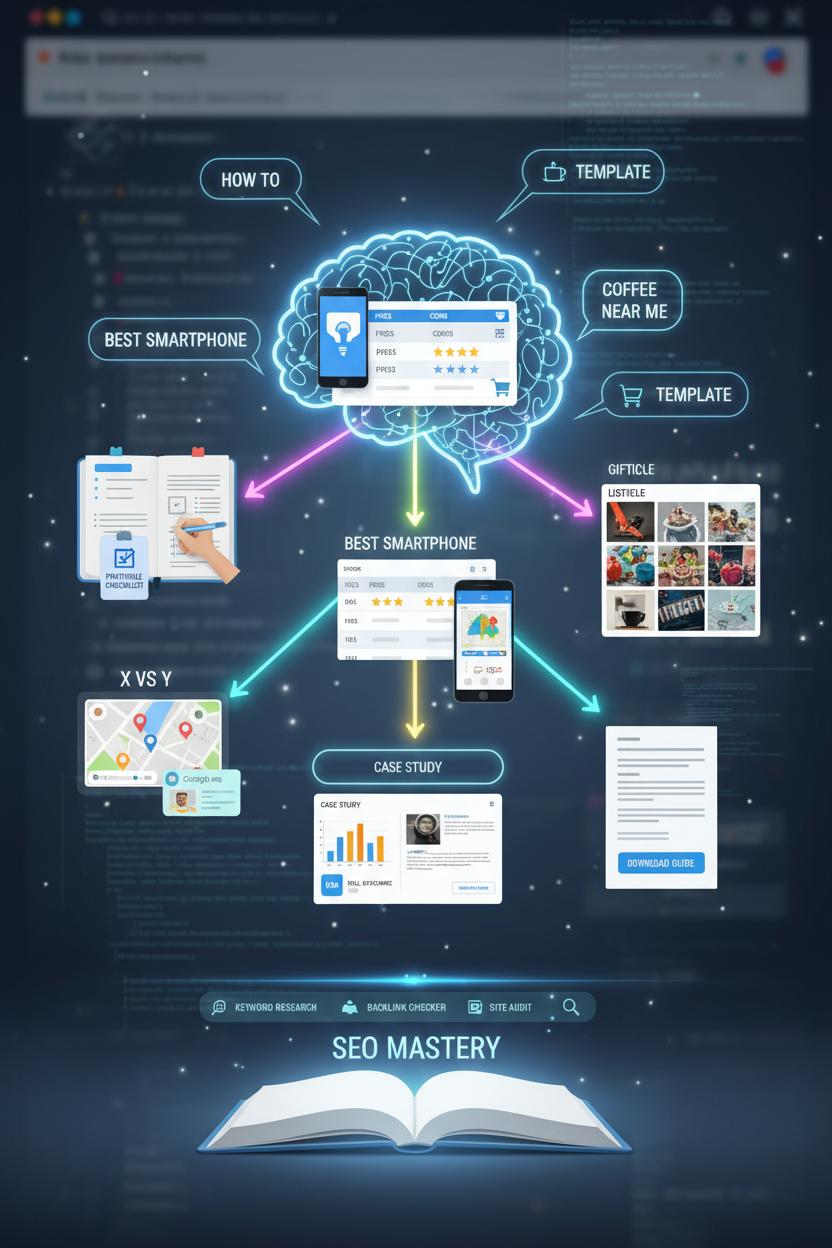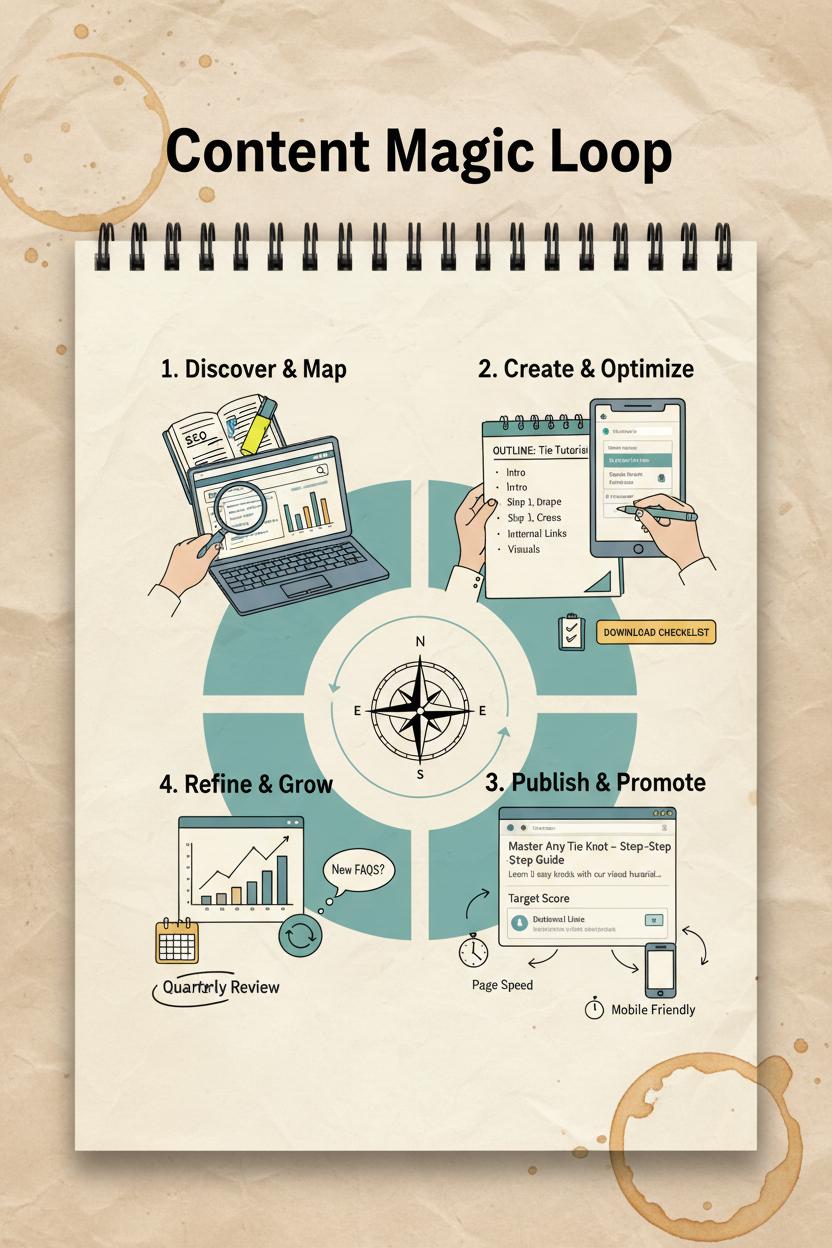Want faster wins from search engine optimization? The best of all SEO tips is simple: satisfy search intent. When your post matches what searchers want, rankings, clicks, and conversions follow. In this guide, you’ll decode intent with smart keyword research, turn insights into compelling content marketing, and polish pages with a content optimization tool. I’ll also share how to pick a keyword research tool, spy gaps with a backlink checker, and fix issues via site audit software—plus my favorite SEO book recs. Pin this for later and start creating content people and Google love.
Why Search Intent Is the One SEO Tip That Powers Search Engine Optimization

If you’ve ever wondered why some posts take off while others sit quietly on page two, it usually comes down to one simple truth: search intent is the heartbeat of search engine optimization. Think of it as the mood behind the query—what the person actually wants in that moment. Are they craving a step-by-step guide, ready-to-buy product options, a quick definition, or the brand’s homepage? When you honor that intent, everything else in your content marketing starts to click. “Best running shoes for flat feet” demands a curated, comparison-style roundup, while “how to clean white sneakers” begs for a practical tutorial with photos and a short, scannable checklist. That alignment signals to search engines that your page delivers the exact thing the searcher hoped to find, and it’s why this one principle quietly outperforms a dozen scattered SEO tips.
Search intent also simplifies keyword research and content planning. Instead of chasing every high-volume phrase, you choose keywords that match your audience’s moment—informational, commercial, transactional, or navigational—and craft the right format, depth, and calls to action around it. It informs everything from headings to internal links, and even which metrics you watch: time on page and saves for tutorials, clicks to product pages for comparison posts. Tools help, but they’re most powerful when guided by intent. Keep a favorite SEO book within reach to sharpen your instincts, then validate ideas with a keyword research tool, check credibility with a backlink checker, tidy up technical gaps with site audit software, and polish drafts with a content optimization tool. When your content mirrors what people mean—not just what they type—you earn trust, dwell time, and the kind of engagement that algorithms love. In a world of changing updates and endless advice, grounding your strategy in search intent is the steady compass that keeps your SEO efforts moving forward with purpose.
Map Search Intent to Content Marketing Formats That Win Clicks

Before you draft a single headline, pause and peek at the mood of the query. Search intent is like a little vision board for your content marketing: it tells you which format will feel instantly right in the searcher’s hands. When someone whispers “how to,” they’re craving a cozy, step-by-step tutorial with clear headings, quick wins, and maybe a printable checklist. “Ideas” and “inspiration” lean into roundups, swipe files, and image-rich listicles. “Best,” “vs,” and “review” beg for side-by-side comparisons, pros and cons, and star ratings. This is the connective tissue of search engine optimization—matching what people hope to find with the format that satisfies that hope—backed by thoughtful keyword research so your piece shows up at the exact moment it’s needed.
For pure information seekers, ship skimmable guides, glossaries, and templates that can win featured snippets, with a gentle introduction and crisp subheads. For commercial investigation, create buying guides, “X vs Y” breakdowns, and case studies that stack trust with data, screenshots, and real outcomes. Transactional intent wants clarity and speed: product pages with FAQs, pricing, comparisons, and social proof above the fold. Navigational intent thrives on tidy hub pages and branded landing pages that shorten the path to the right place. Local or near-me queries love maps, neighborhood roundups, and photo-forward mini-guides. If the SERP is heavy with videos or images, lean into those formats; if People Also Ask dominates, structure your H2s as questions and answer them succinctly. A good content optimization tool can help you mirror the SERP’s structure without copying its soul.
To choose wisely, skim the first page like a stylist pulling looks: what formats rank, what questions recur, what gaps can you fill better or faster? A keyword research tool will surface variations and long-tail angles; a backlink checker reveals which comparison posts and guides actually earn links; site audit software ensures your beautiful content isn’t tripped up by technical snags. If you want deeper context and more SEO tips, a well-loved SEO book can sharpen your instincts. Map format to intent, then polish with empathy and detail, and watch how those clicks turn into satisfied readers who stay, save, and share.
Fix Friction Points: Use Site Audit Software to Remove Intent-Blocking Issues

Nothing ruins the cozy click-to-answer moment like a page that stutters, hides the good stuff below the fold, or sends you into a maze of broken links. That’s where site audit software becomes your tidy-up day hero. It crawls your site like a super-organized friend, surfacing the friction points that quietly block search intent: sluggish load times, render-blocking scripts, 404s and redirect chains, thin or duplicate content, messy metadata, and those jumpy layouts that shift just as someone tries to tap a button. In the world of search engine optimization, these aren’t minor smudges—they’re intent-blockers. When people come with a clear question, every second and every pixel should usher them to the answer. Think of it as hospitality for your visitors and a love note to Google, folded neatly into your content marketing routine.
Start with a full crawl to map what’s indexed and what’s orphaned, then triage the big energy leaks: compress bloated images, lazy-load what can wait, and make sure your above-the-fold section actually answers the query. Align titles, H1s, and meta descriptions with the phrasing you discovered in keyword research, and let a content optimization tool fine-tune headings, FAQs, and internal linking so the most helpful page becomes the easiest path. Use a backlink checker to reclaim link equity—find broken inbound links and 301 them to relevant pages. Audit Core Web Vitals, clean up CLS and LCP offenders, and tame intrusive pop-ups that delay the first helpful interaction. Add structured data where it clarifies intent (FAQ, HowTo), fix canonicals and pagination quirks, and keep your navigation intuitive so users can glide from big idea to specific solution without friction.
Make it a rhythm, not a one-off: run audits monthly, keep a “friction list,” and pair these SEO tips with fresh content updates. If you’re building your toolkit, an approachable SEO book can shorten the learning curve, while a reliable keyword research tool, site audit software, and backlink checker round out the essentials. When your pages feel fast, clear, and welcoming, you don’t just please algorithms—you satisfy search intent in seconds, which is exactly how rankings—and readers—reward you.
SERP Recon: Read the Room With Competitor Analysis and Search Engine Optimization Cues

Before you write a single word, open the SERP and treat it like a mood board. The first page of results is the room you’ve just walked into, and your job is to read the vibes. Are the top results quick how-tos, deep dives, comparison roundups, or product pages? Do you see People Also Ask questions, video carousels, or shopping cards stealing attention? Those layout cues whisper the dominant search intent: is the searcher craving a tutorial, a shopping nudge, or a definitive guide? Scan titles and intros to hear the tone—urgent, playful, scholarly—and notice recurring phrases and angles. This is search engine optimization as etiquette: you’re not barging in with your own agenda, you’re joining a conversation already in progress.
Do a little recon with your toolkit. A keyword research tool will help you spot intent-laden modifiers like “best,” “vs,” “how to,” and “near me,” so you can match the format searchers expect. Peek under the hood of top-ranking pages with a backlink checker to gauge the authority you’re up against and to see which resources they’ve earned links from. Run a quick pass with site audit software to note technical polish—fast loads, clean structure, mobile-friendly layouts—and don’t ignore those People Also Ask clusters; they’re free prompts for subheads. Then, drop the frontrunners into a content optimization tool to surface semantic gaps: terms, examples, and FAQs that the winners consistently include. This isn’t copying; it’s pattern recognition—one of the most reliable SEO tips you can practice.
Now translate your notes into an outline that fits the room but adds something memorable. If everyone is listing features, bring outcomes. If the SERP is all product pages, consider a shopper’s guide with comparison tables and decision criteria. Blend your keyword research with genuine authority—original data, a mini case study, or a crisp framework—and thread it through with warm, reader-first storytelling that belongs in your content marketing. If you want to deepen your instincts, curl up with a well-reviewed SEO book and keep refining your reconnaissance habit. Search engine optimization rewards creators who listen closely; when you mirror the intent and then elevate it with clarity and care, your page feels like the exact thing someone meant to find.
Action Plan: A Repeatable Workflow for Search Intent–Driven Content Marketing

Start with a quiet moment and a curious mind. Jot down the real questions your audience whispers into the search bar, then validate them with a favorite keyword research tool to see how often they’re asked and how the results pages look. Peek at the top results and categorize the search intent: are people seeking step-by-step guidance, quick definitions, or product comparisons? This is the heart of search engine optimization—aligning what you create with what they mean. Pick a primary keyword, list a few related ones, and write a one-sentence intent statement to keep your path steady. If you like to learn by the glow of a highlighter, keep an SEO book nearby for deeper strategy notes and inspiration.
Next, sketch a content outline that mirrors the intent. If the query screams “how,” plan a tutorial with clear subheads and gentle, get-it-done language. If it’s “best” or “vs,” structure a comparison that’s scannable but substantial. In your brief, capture the must-answer questions, internal links you’ll add for context, and any visuals to demystify the topic. Draft with warmth and clarity; then open a content optimization tool to compare your coverage to what searchers expect without stuffing. Match the call to action to the stage—invite a bookmark, a checklist download, or a soft nudge to explore related guides. Before publishing, run a quick check with site audit software to tidy technical snags that could dull your shine: page speed, mobile friendliness, and crawlability all matter for content marketing that actually performs.
Finally, publish and polish like a pro. Craft a title tag that mirrors the promise, write a meta description that whispers benefits, and sprinkle internal links that help readers take the next natural step. After a few days, monitor performance and adjust headings or intro paragraphs to better reflect the dominant intent you’re seeing. Use a backlink checker to find curators and resource pages already linking to similar pieces and offer your guide as a fresher, more complete option. Revisit quarterly: refresh stats, tighten examples, and fold in new FAQs from your audience. This simple, repeatable loop—keyword research, intent mapping, thoughtful creation, and iterative refinement—is the kind of practical magic behind the best SEO tips and the most enduring results in search engine optimization.
Conclusion
At the end of the day, the simplest path to search engine optimization is empathy: understand search intent and meet it beautifully. Let your keyword research guide you, but let real questions shape your content marketing. If you remember one thing from these SEO tips, make it this—answer the exact need behind the query, fast, clearly, and with heart. Brew a fresh coffee, revisit your top pages, and align every headline, snippet, and CTA to intent. Your rankings—and your readers—will feel it.